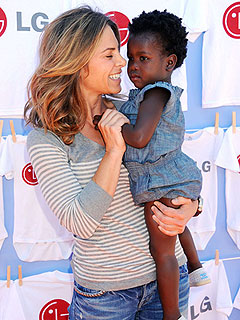TOKYO (Reuters) - Asian shares advanced on Monday, drawing momentum from U.S. data showing some promise of a credible recovery, supported by Federal Reserve's easing plans and solid manufacturing data from Europe and China.
The yen took a break from heavy selling against the U.S. dollar and the euro, but fell to its lowest since August 2008 against the Australian and New Zealand dollars early on Monday on confidence of bold monetary support from the Bank of Japan to overcome the country's stubborn deflation.
The MSCI's broadest index of Asia-Pacific shares outside Japan <.miapj0000pus> rose 0.6 percent after posting a weekly gain of 0.7 percent.
"Asian shares are likely to take the cues from the rise in U.S. equities and prices of risk assets are generally expected to face upward pressures," said Naohiro Niimura, a partner at research and consulting firm Market Risk Advisory.
The Dow Jones industrial average <.dji> rose to 14,000 for the first time since October 2007 and the Standard & Poor's 500 Index <.spx> hit its highest point since December of that year.
U.S. data showed on Friday payrolls rose by 157,000 last month, with upward revisions for November and December, while the Institute for Supply Management said its index of national factory activity rose to its highest since April.
China followed with positive news over the weekend, saying growth in its official purchasing managers' index (PMI) for the non-manufacturing sector ticked up in January for the fourth straight monthly rise, confirming the world's second-largest economy was showing a modest recovery.
Resources-reliant Australian shares <.axjo> steadied after jumping 0.9 percent to a 21-month high on Friday. Positive economic news from China, Australia's largest export destination, usually boosts Australian investor sentiment.
South Korean shares <.ks11> were up 0.3 percent while Hong Kong shares <.hsi> added 0.7 percent.
NIKKEI MAY BE PEAKING
Japan's benchmark Nikkei stock average <.n225> rose 0.5 percent after climbing to a fresh 33-month high earlier as the yen declined. The index logged its 12th straight week of increases last week, the longest run of weekly gains since 1959. <.t/>
Nikkei has been moving in tandem with the yen's two-month-long losing streak with investors eyeing the change in the BOJ's top personnel in April for clues on the degree of the bank's reflationary policy.
"The Nikkei may be nearing its peak for now as we may get a specific name of the most likely candidate for the next BOJ governor soon. That may provide an opportunity to close long dollar/yen positions, while a firming yen will then likely spur investors to book profits on Japanese stocks," said Tetsuro Ii, the chief executive of Commons Asset Management.
The dollar eased 0.1 percent to 92.72 yen after scaling its highest since May 2010 of 92.97 on Friday, while the euro fell 0.3 percent to 126.32 yen, still near its loftiest since April 2010 of 126.97 touched on Friday.
In early Monday trade, the yen plunged to its lowest since August 2008 against both the Australian dollar, at 96.78 yen, and against the New Zealand dollar at 78.74 yen.
The euro inched down 0.1 percent to $1.3624, off Friday's 14-1/2-month peak of $1.3711 hit after data showed euro zone factories had their best month in January in nearly a year.
On Friday, the dollar index measured against a basket of key currencies fell to a 4-1/2-month low of 78.918 <.dxy>. The index was up 0.2 percent on Monday.
As economic optimism rose and concerns about the euro zone's debt difficulties eased, investors took on more risk.
Research provider TrimTabs Investment Research said on Saturday investors poured a record $77.4 billion in new cash into stock mutual funds and exchange-traded funds in January, surpassing the previous monthly record of $53.7 billion in February 2000.
In the oil market, tension across the Middle East put Brent crude on track to its biggest weekly gain since mid-November, and U.S. crude rose for an eighth straight week, although it eased 0.2 percent to $97.56 a barrel on Monday.
With the rise in equities on recovering appetite for riskier assets, safe-haven appeal waned, pushing up yields of U.S. Treasury bonds. The U.S. 10-year Treasury yield hit a nine-month high of 2.052 percent in Asia on Monday.
A weekly gauge of sentiment in the Japanese government bond market deteriorated sharply, remaining in negative territory for a fifth straight week as rising global appetite for risk sapped demand for bonds, the latest Reuters poll showed on Monday.
(Editing by Eric Meijer)











